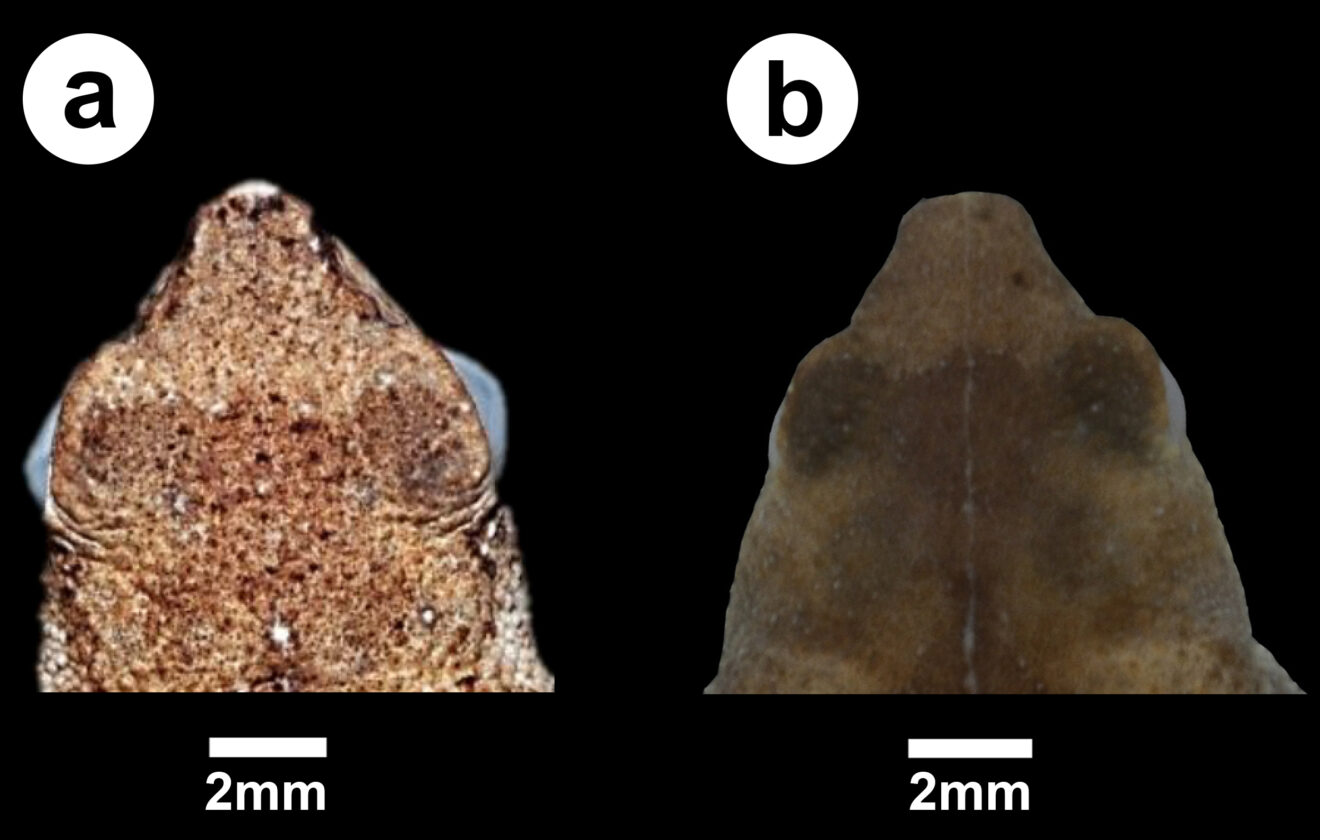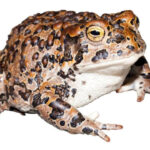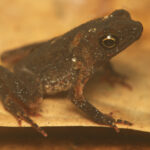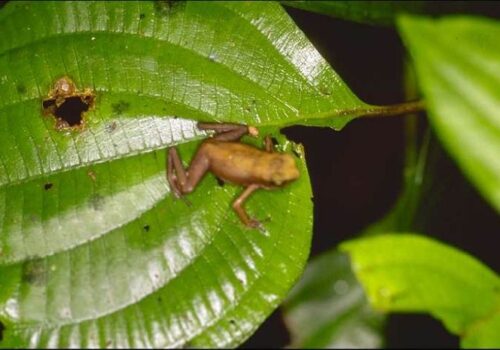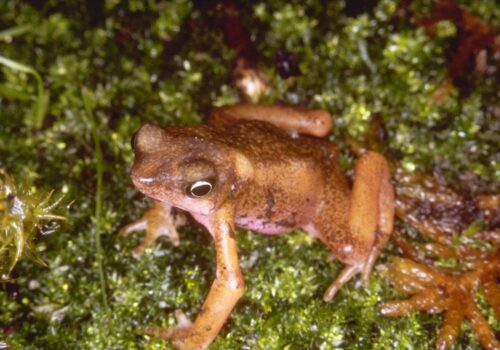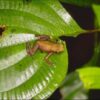Amazophrynella gardai: Secrets of the Amazon’s Enigmatic Tiny Toad#
Beneath the lush emerald canopy of the Brazilian Amazon, hidden among leaf litter and moss-covered roots, resides a diminutive yet captivating frog species: Amazophrynella gardai. Unknown to many and relatively new to science, this tiny amphibian species has quietly earned its place as one of nature’s subtle wonders. With unique behaviors, cryptic adaptations, and a fascinating ecological role, Amazophrynella gardai exemplifies the astonishing biodiversity sheltered within our world’s largest rainforest.
Discovered and formally described as recently as 2018, Amazophrynella gardai, affectionately nicknamed “Garda’s Amazonian toadlet,” draws attention not only for its remarkably petite size—often less than two centimeters—but also for its intricate patterns and elusive nature. Unraveling the story of this secretive frog offers insights into intricate Amazonian ecosystems, highlighting relationships that sustain life and emphasizing the critical need for conservation.
Taxonomy and Classification#
Amazophrynella gardai, belonging to the Bufonidae family, contributes to a genus known for small-sized, cryptically colored frogs. Within this fascinating genus, multiple species occupy unique niches across the Amazon basin. However, Amazophrynella gardai distinguishes itself through specific morphological traits and genetic uniqueness that intrigued taxonomists, leading to its formal classification as a new species.
The genus Amazophrynella itself remains relatively understudied, with new discoveries continually emerging as deeper field research advances, underscoring the Amazon’s immense biological complexity. Closely related species include Amazophrynella minuta and Amazophrynella vote, each occupying subtle yet distinct ecological niches, forming a tapestry of adaptable toadlets across various microhabitats.
Natural Habitat#
To encounter Amazophrynella gardai is to embrace the quiet, intense vitality of primary rainforest environments. Native exclusively to Brazil’s western Amazonian lowlands, particularly the region surrounding the Purus River basin, this amphibian calls the rainforest floor home, thriving amid dense leaf litter, fallen logs, and moist microhabitats shaded beneath towering trees.
The region’s climate—warm, humid, and perpetually damp—creates an ideal refuge for amphibian life. Within this moisture-rich microenvironment, Amazophrynella gardai demonstrates an exquisite adaptation to the undergrowth, sheltering during the day beneath debris, mosses, and rotting vegetation, emerging cautiously at dusk to forage.
Beneath the protective roof of colossal trees—where filtered sunlight hardly reaches the forest floor—time itself seems suspended. Here the amphibian’s muted coloration serves as impeccable camouflage in this eternally twilight world, enabling these tiny frogs to remain undetected by predators such as birds, snakes, and larger amphibians. Such reliance on precise environmental conditions emphasizes their extreme sensitivity to habitat disruption, offering biologists insights into the health of Amazonian ecosystems.
Physical Characteristics#
Though diminutive in stature, Amazophrynella gardai captivates through intricate beauty. Adults rarely surpass 17 millimeters, with females slightly larger than males. It is the subtle details, however, that truly showcase evolutionary brilliance. The toadlet displays mottled shades of brown, gray, and black, perfectly mirroring the decomposing leaves and detritus among which it lives. This cryptic camouflage not only aids in protection from predators, but facilitates stealthy movement and predation strategy.
The skin texture is granular and delicately textured, often with irregular dark patches mirrored by lighter speckles—an ideal ensemble to mimic the dappled shadows and textures of the rainforest floor. Large and expressive eyes, often glinting in low light, grant these tiny amphibians exceptional low-light vision, allowing efficient nocturnal activity safe from daylight predators.
Like others in the Bufonidae family, subtle parotid glands behind the eyes may secrete mild alkaloid toxins as a defense mechanism. Although not harmful to humans, such adaptations enhance survival against potential reptilian or avian predators, underscoring nature’s endless evolutionary resourcefulness.
Behavior and Life Cycle#
Diet and Foraging Habits#
Amazophrynella gardai primarily feeds upon minuscule arthropods, ants, mites, springtails, and other small rainforest invertebrates abundant beneath the damp leaf litter. Equipped with a rapid-fire tongue and sharp eyesight calibrated for detecting movement in low luminosity, these tiny predators deftly stalk their diminutive prey, contributing to the dynamic balance of the forest ecosystem.
Feeding occurs mainly during the twilight hours, when the forest’s myriad insects become active, providing ample feeding opportunities. These nocturnal forays are as subtly choreographed as a forest ballet, with miniature predators zigzagging through leaf litter, leaping short distances, unerringly accurate yet discreet.
Mating Rituals and Reproduction#
Like many Amazonian anuran species, the rainy season triggers intense reproductive activity, initiating spectacular breeding choruses. Male Amazophrynella gardai congregate in small groups, selecting tiny seasonal pools or slow-moving forest streams to broadcast their gentle yet characteristic calls, barely audible beyond a few meters. For visiting observers, these choruses might sound like delicate echoes of forest whispers, offering a serene auditory landscape punctuated by occasional insect chirps and distant bird sounds.
After courtship calls successfully attract females, mating and spawning commence. Females deposit small, gelatinous egg clutches adhered to submerged vegetation or detritus beneath the water’s surface. Within days, tadpoles hatch and begin their aquatic developmental cycle, feeding upon microscopic algae and detritus while navigating dangerous waters populated by aquatic insects and predatory larvae.
Over several weeks, surviving tadpoles metamorphose into tiny terrestrial froglets—an immense triumph for such vulnerable young. This delicate reproductive process underscores the frog’s reliance on undisturbed habitats, which provide requisite seasonal pooling and gentle forest streams to complete their intricate lifecycle.
Ecological Role#
The importance of small species like Amazophrynella gardai stretches far beyond their modest individual sizes. Functioning as both predator and prey, these tiny amphibians serve crucial ecological roles. By controlling microarthropod populations, they prevent unchecked explosions of insects, mites, and other forest-floor invertebrates, helping maintain complex food web balances. As prey themselves, they furnish nutrition to many animals, from frogs and snakes to birds and small mammals, embedding them into a complex tapestry of forest relationships.
Furthermore, amphibians like Amazophrynella gardai often serve as sensitive bioindicators, providing cues regarding ecosystem health. Any reduction in amphibian populations might signal subtle environmental disruptions—warning scientists and conservationists of threats long before they escalate into irreversible ecological damage.
Threats and Conservation Status#
Currently, due to its recent discovery and limited distribution, Amazophrynella gardai remains relatively understudied and is not yet formally assessed by the IUCN Red List. Nevertheless, the relentless advancement of habitat loss and degradation—in the form of logging, forest clearances for agriculture, illegal mining activities, and infrastructure projects—poses potentially severe threats to these small Amazonian wonders.
Climate change further compounds these threats, with alterations in rainfall patterns and humidity directly impacting breeding habitats, possibly disrupting their delicate reproductive cycles. Ongoing monitoring and targeted conservation actions are urgently needed, with particular attention to maintaining intact and undisturbed forests, crucial sanctuaries for Amazophrynella gardai and countless other equally vulnerable species.
Cultural and Scientific Significance#
While perhaps unknown in broader cultural narratives, Amazophrynella gardai symbolizes the astounding diversity inherent to Amazonian forests. As testament to the continuous exploration and scientific curiosity, its discovery highlights the forest’s ongoing potential to astonish and inspire.
Scientific research involving newly discovered amphibians enriches understanding—and appreciation—of biodiversity upon our fragile planet, emphasizing that each species, no matter how small, possesses inherent value worth protecting.
Conclusion: Appreciating the Tiny Wonders of the Amazon#
Amazophrynella gardai, hidden among leaf shadows, quietly evokes wonder and curiosity, reminding us of our world’s infinite intricacies. Preserving habitats like the Brazilian Amazon not only safeguards this charismatic, miniature toad but reverberates outward, sustaining entire ecosystems and supporting the astounding richness of life.
Exploring the story of Amazophrynella gardai invites recognition, engagement, and advocacy. Readers and nature enthusiasts alike are encouraged to champion conservation initiatives and deepen their explorations into the countless undiscovered stories hidden in the vibrant tapestry of Amazonian life.








